Grouse - spring flower: description, varieties and care rules
Grouse - a flower from the Liliaceae family, this is one of the most beautiful spring flowers. He is the first to please gardeners, since it begins to bloom already in April - early May, hazel grouses look especially beautiful when planting next to tulips... The Latin name of this flower is Fritillaria, from the Latin language it translates as "a glass for dice" - the plant got this name because of the special shape of the bud.
Content:
- Description and features of the flower
- Types and varieties of hazel grouse
- Growing grouse and caring for them
- Breeding methods for hazel grouse
- Diseases and pests of hazel grouse
Description and features of the flower
Outwardly, the plant resembles a small palm tree: it is no coincidence that the hazel grouse is also called the tree of paradise. It is a bulbous plant: a bulb consisting of fleshy scales requires careful and careful handling, since the survival rate after landing... The leaves have an oblong-lanceolate shape, they are characterized by a whorled arrangement in the lower part of the stem.
The main feature of the hazel grouse, for which it got its name, is the unusual shape and color of the buds.
Large flowers are arranged singly or are collected in inflorescences, in any case, the buds are turned down. They have a characteristic pungent odor - it serves as a natural repeller moles and rodents from the site. Depending on the type, flowers can have a variety of shades and colors, they can be purple, variegated, yellow-violet, etc. Plants look especially beautiful if they are planted in a flower bed in small groups.
Hazel grouse is perennial Plant: Unlike many bulbous plants, it does not need to be dug up and replanted every year. However, the bulb must be well warmed up by the sun to prepare for the next flowering: if the heat is not enough, next year the hazel grouse may not bloom at all.
Types and varieties of hazel grouse
There are several wild-growing hazel grouses, significantly different from each other. The most common and interesting species of hazel grouse:
- Chess hazel grouse, which is a representative of the Eufritillaria section. In the gardens of Europe and Asia, it has been grown since the 16th century, it has become widespread due to the interesting white-burgundy color of flowers: the spots are staggered, the bud itself has a shape bell... This is a fairly tall plant - the stem length reaches 35 cm.
- The imperial hazel grouse is a beautiful plant with large yellow-orange buds. The height of the hazel grouse reaches 1 meter, its peculiarity is that the apical leaves are located above the flowers in the shape of a crown. It looks very interesting, it is a real decoration for the garden in the spring months.
- Russian hazel grouse is a plant that grows wild in the steppe zone. Has maroon flowers in the form bells and a tall stem. this plant is referred to as primroses - it begins to bloom in March-April immediately after the snow melts. Unfortunately, because of its beautiful buds, it is often thoughtlessly destroyed - today this species is listed in the Red Book.
- Grouse Mikhailovsky is a low plant, the stem length does not exceed 20 cm.Its peculiarity is beautiful two-color buds, they have a bright yellow-violet color.
- Persian hazel grouse is one of the most thermophilic varieties. A common cultivar is Ivory Bell with an unusual color of petals - they have a yellow-green color, sometimes with a lemon tint.
- Grouse yellow - a plant with bright yellow large buds, visible from afar. this is a stunted species, the height of the stem does not exceed 30 cm.
All types of hazel grouses can be used not only for growing on flower beds, but also for decorating alpine slides or planting in groups on the curbs along the paths. They look just great, especially because they bloom when there are no other bright colors in the garden yet. Choosing several varieties of hazel grouse, you can experiment with the color shades of the buds.
Growing grouse and caring for them
Growing hazel grouses is not a very difficult process, these flowers can hardly be called particularly capricious. However, they require compliance with several prerequisites for the bulb to gain enough strength for the next flowering.
To see beautiful buds in the garden, you must provide the following conditions for growing hazel grouse:
- The bulbs are planted in a flower bed in the fall, it is better to do this in September-October before the onset of cold weather. The soil must be mulched to protect the bulbs from freezing. If they are cold, the bulbs may simply not sprout.
- Since the bulbs do not have external protective scales, they must be handled with care. To prevent rotting before planting them process a weak solution of potassium permanganate.
- Well depth for landing is 12 cm for low-growing varieties and about 20 cm for tall ones. To prevent the roots from decaying, it is necessary to ensure a good outflow of water: for this, the bottom of the holes is covered with coarse sand. The soil should not be too cold and wet - this also promotes rapid decay.
- Light nutritious soils are most suitable for hazel grouses; peat can be used as a source of nutrients.
- Plants are watered about 1-2 times a month, the soil should not dry out. Wherein watering should not be too frequent - this can lead to decay of the roots.
- Top dressing held twice - in mid-April and at the end of flowering. While the buds have not yet faded, wood ash can be used as a source of minerals - it is scattered around the plant and mulch.
In July, the aerial part of the hazel grouse is cut off. This is necessary so that the plant has time to accumulate a supply of nutrients sufficient for wintering and subsequent flowering. In the southern regions, in sunny open areas, it is not necessary to dig up the bulbs - they will be able to get enough heat naturally, and they will bloom again next year. In areas with a temperate climate, it is still better to remove the bulbs from the ground and dry them well. The best drying place is in a warm and dry attic.
Grouse breeding methods
The plant can be propagated vegetatively and seeds... The first option involves reproduction using baby bulbs: they can be easily separated from the mother's bulb every two years, in this case they will not have to grow for a long time before starting flowering... If the bulb consists of two large flakes, you can simply split it in half and dry it well, resulting in two plants. However, such halves are less resistant to decay, and they need to be planted a little earlier.
Propagation of hazel grouse by seeds allows you to experiment with shades of buds when crossing two varieties or two species to obtain a hybrid.
After flowering, the plant forms a fruit-box: after it dries, seeds can be harvested, which immediately after collection are placed in the soil.For hazel grouses, you need to choose a well-heated area, taking into account the fact that they will grow in one place for several years.
The seeds are placed in the ground to a depth of about 1 cm and covered with a 2 cm layer of peat, and the first shoots can be seen in the spring. The distance between furrows should be at least 10 cm to ensure good drainage. Seedlings need to be fed regularly to provide them with everything they need to grow. From the second year onwards, the bulbs must be dug up and stored in a dry place to prevent decay. The hazel grouse will bloom in the fourth year after planting the seeds. It is always interesting for gardeners to observe the results of crossing two varieties - it is mono to get buds of an interesting non-standard color or an unusual size.
Diseases and pests of hazel grouse
Early flowering plants suffer less from peststhan other members of the bulbous family: they fade before many insects have time to wake up. However, there are several serious threats from which hazel grouse bulbs can be severely affected:
- Bulb rot. The main causes of decay are excess moisture and an increased amount of nitrogen fertilizers in the soil. Even if the bulb began to rot, it is easy to try to save it: for this, the rotten area is carefully cut out with a sharp knife, and the places of the environment are processed fungicides.
- The lily beetle and onion rattle can harm the leaves of the plant. However, this happens quite rarely - a specific smell scares away insects, and they begin to eat leaves only if there are no other plants nearby.
- Bulbs can damage the root bulb mite or bear... They gnaw through the shell and feed on the pulp of the plant. If at least one bulb has been infested, hazel grouse can no longer be planted in this area for several years. For pest control, you can use fudazol and karbofos - they are used to pickle the affected bulbs.
- Rust - diseasethat infects the leaves of the plant. Yellowish spots appear on the upper side, and rust spores appear on the lower side. The affected parts of the plants must be removed immediately, after which they are treated with fungicides.
Taking timely measures, you can completely get rid of all manifestations of diseases and keep the remaining bulbs healthy until the next flowering period.
More information can be found in the video.



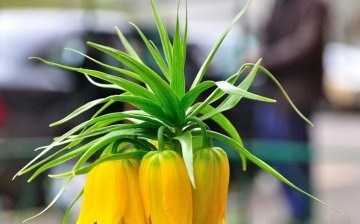

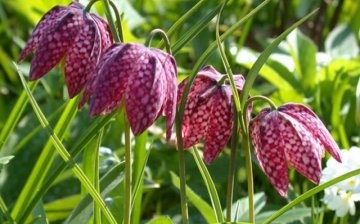
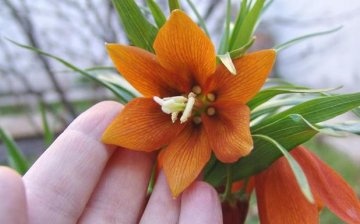
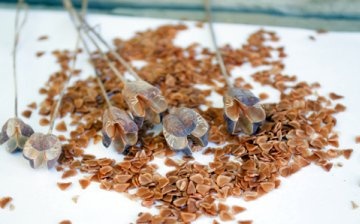
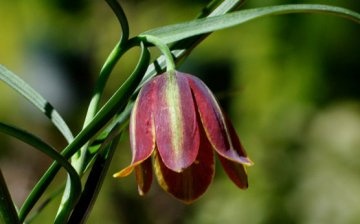






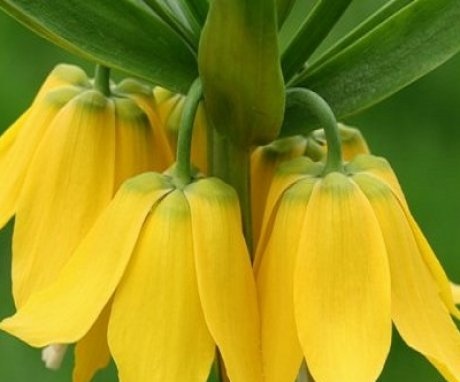
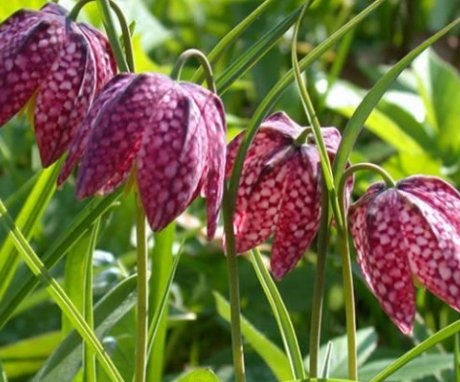
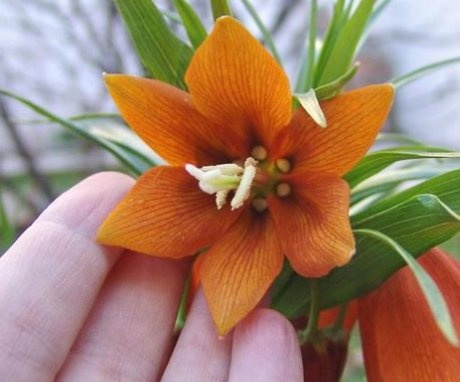
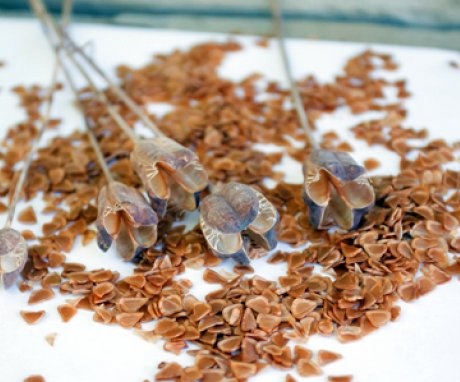
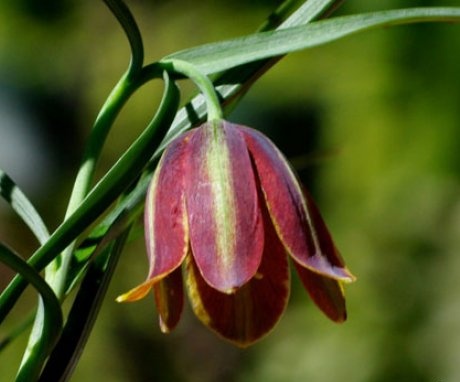
The hazel grouse is a special flower, it bloomed in the spring, and the whole summer it is not visible. Therefore, I often plant its bulbs in a glass or other plastic container with drainage holes and bury them in the flower garden. In the middle of summer, I dig it out with a glass and put it in a dry place. At the beginning of autumn, the bulb returns to the ground again. Relevant for small bulbs or rare ones that are afraid to lose.
I like them very much. But. Last year I decided to try with the usual ones (what if something goes wrong). Planted before winter, ascended, and .. did not bloom completely, and remained in buds. I hope everything will be all right this spring.